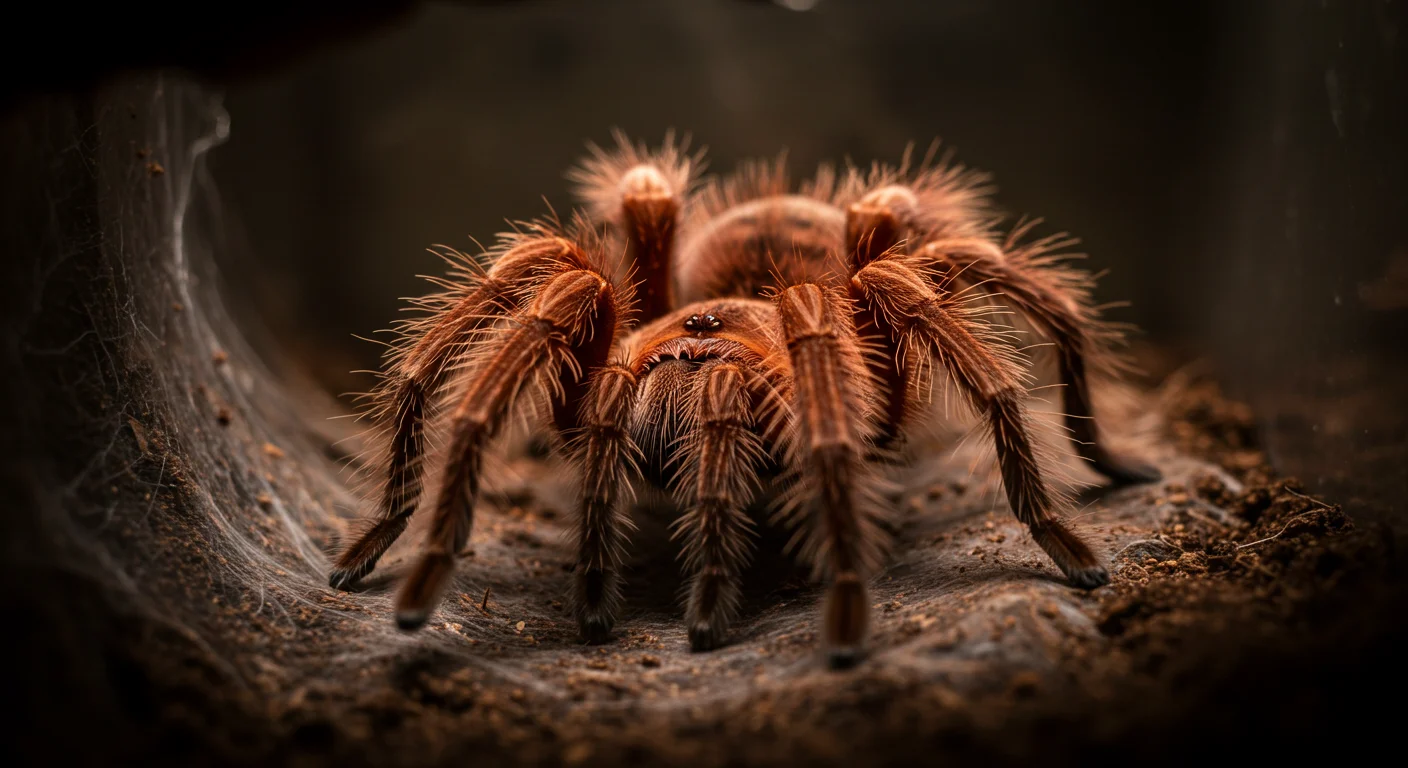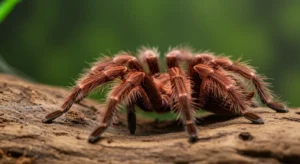Chilean Rose Tarantulas and Light Sensitivity: Lighting Requirements
Introduction: Life in the Dim
Unlike many reptiles that require specific lighting like UVB for health, Chilean Rose Tarantulas (Grammostola rosea) have very simple lighting needs. Originating from habitats where they often spend daylight hours hidden in burrows or under debris, these tarantulas are naturally adapted to low-light conditions and are quite sensitive to bright light. Understanding their relationship with light is crucial for creating a stress-free captive environment.
Natural Habitat Lighting Cues
In their natural environment in Chile, Argentina, and Bolivia, Chilean Rose Tarantulas experience natural day/night cycles. While they typically remain hidden during the brightest parts of the day to avoid predators and desiccation, the ambient change from daylight to dusk serves as a cue for their CITES classification can be complex, as referenced in resources tracking wildlife trade like the CITES appendices, though *G. rosea* itself is not typically listed as endangered.
Sensitivity to Bright Light
Tarantulas, including G. rosea, possess simple eyes (ocelli) primarily capable of detecting light intensity and movement rather than forming complex images. They are generally photonegative, meaning they tend to move away from bright light sources. Intense, direct light can be stressful and irritating to them, prompting them to retreat into their hides or exhibit agitated behavior. This sensitivity underscores the need for subdued lighting in their enclosures.

Enclosure Lighting Requirements
For a Chilean Rose Tarantula, no special lighting is required within the enclosure for their health. Ambient room light is perfectly sufficient to provide the necessary day/night cycle.
- Avoid Direct Lighting: Do not place bright lamps (like halogen or strong LEDs) directly over or pointed at the tarantula enclosure.
- No UVB Needed: Unlike diurnal reptiles, tarantulas do not require UVB lighting for calcium metabolism or any other health reason. Providing it is unnecessary and potentially stressful due to the brightness.
- Location Matters: Position the enclosure away from direct sunlight (which can also cause dangerous overheating). A location with indirect natural light or standard room lighting is ideal.
The primary tarantula light requirements revolve around providing a discernible cycle, not specific artificial light sources.
Importance of a Day/Night Cycle
While they don’t need special lights, maintaining a regular day/night cycle is important for regulating their natural behaviors. Ambient room light that turns on during the day and off at night provides this cycle sufficiently. Consistent periods of darkness encourage their natural nocturnal/crepuscular activity patterns (hunting, exploring).
A simple, consistent light cycle from ambient room lighting is all that’s needed. Avoid constant light or constant darkness.
A Note on Heat Lamps
Heat lamps should generally be avoided for Chilean Rose Tarantulas. They can easily overheat the enclosure and dry out the environment too quickly. If supplemental heat is needed (i.e., room temperature consistently drops below 65°F/18°C), an under-tank heater (UTH) attached to the side (not bottom) of the enclosure and controlled by a thermostat is a much safer option. Heat lamps provide intense light and heat, both of which are undesirable.
Lighting for Observation
If you wish to observe your tarantula during its active nighttime hours, use a dim red light source. Tarantulas have poor vision in the red spectrum, so a red LED bulb or flashlight is less likely to disturb them compared to white light. Keep observation times brief to minimize any potential stress.

Conclusion: Keep Lighting Simple
Lighting requirements for Chilean Rose Tarantulas are minimal and straightforward. They are sensitive to bright lights and require no specialized lamps like UVB fixtures. Providing a regular day/night cycle through indirect ambient room light is sufficient. Avoid direct, intense lighting and heat lamps, instead focusing on maintaining appropriate temperatures and humidity through other means. Respecting their natural aversion to bright light contributes significantly to a low-stress environment for your pet.
CITES reference provides context on wildlife trade regulations, not specific listing status of G. rosea.
